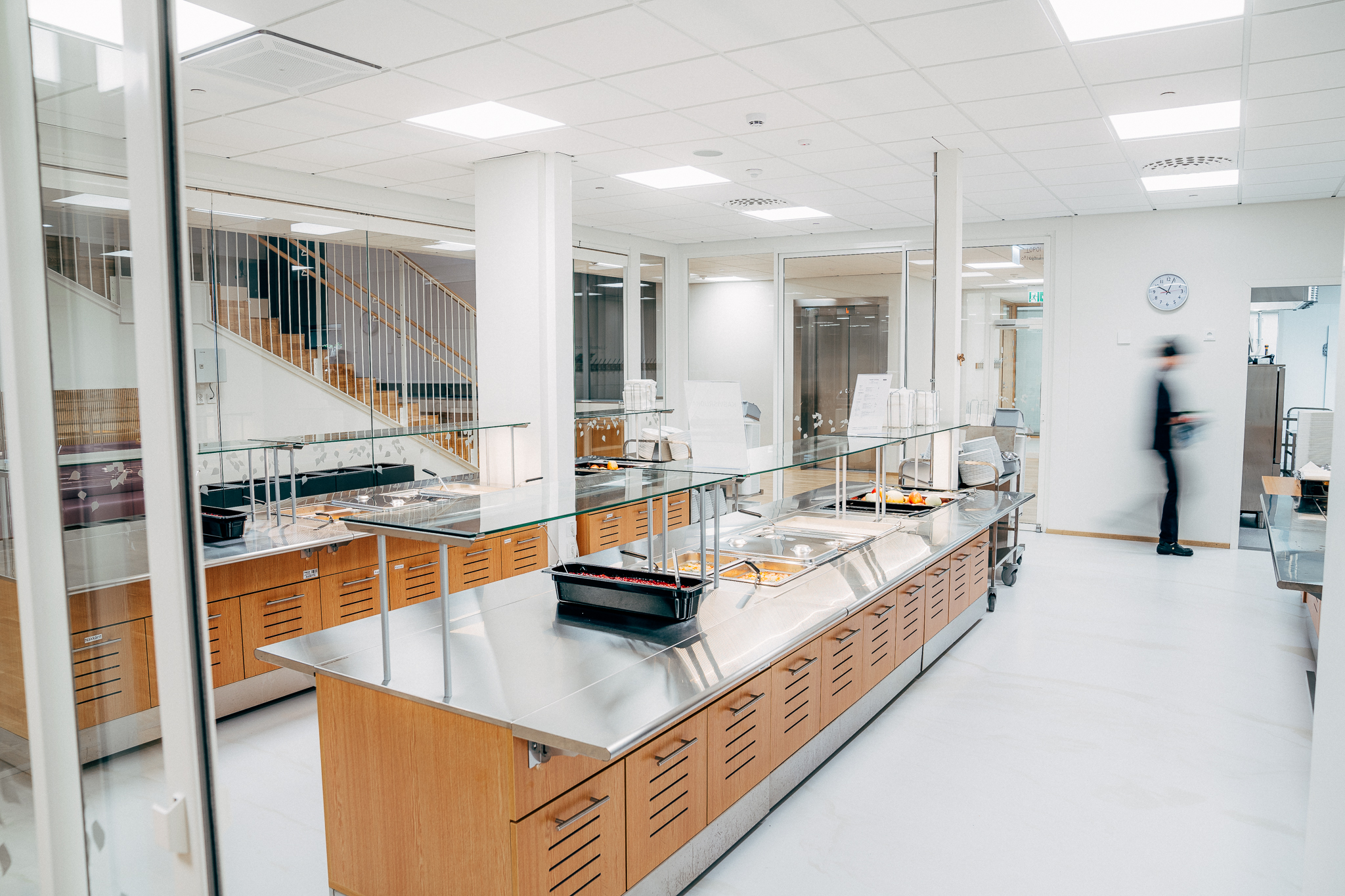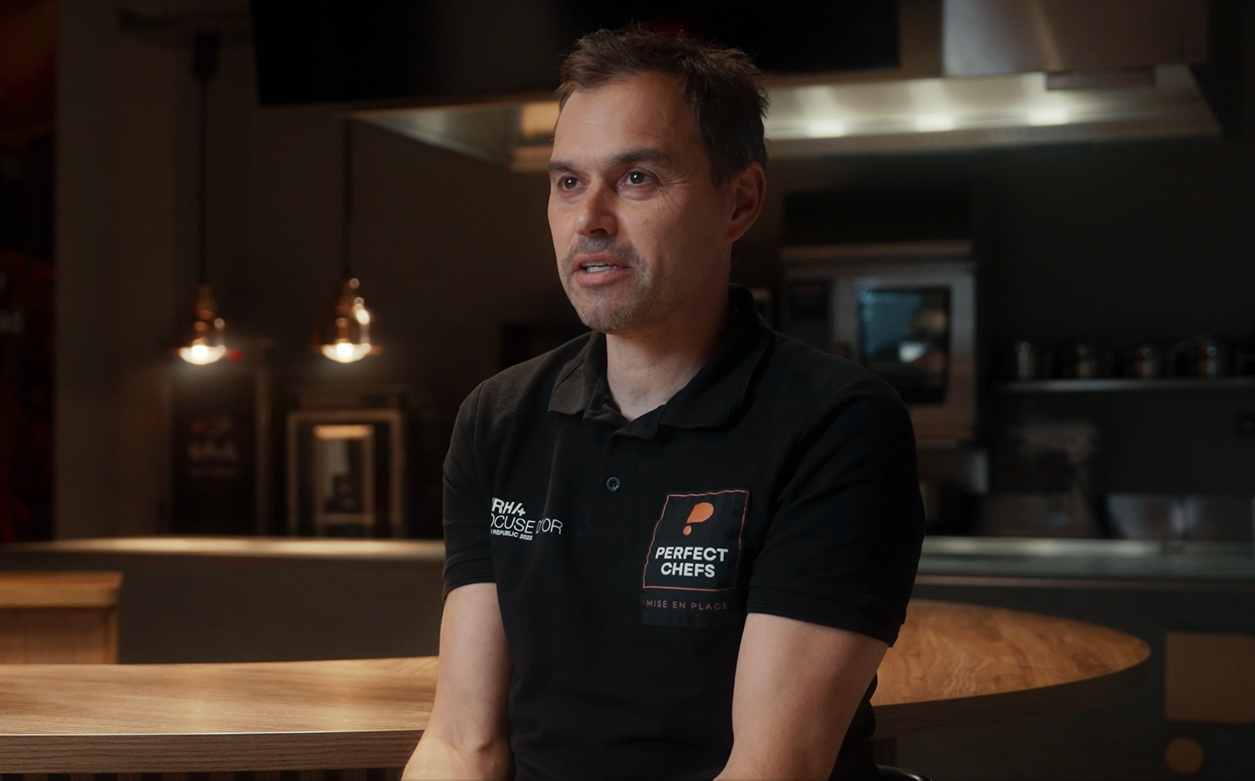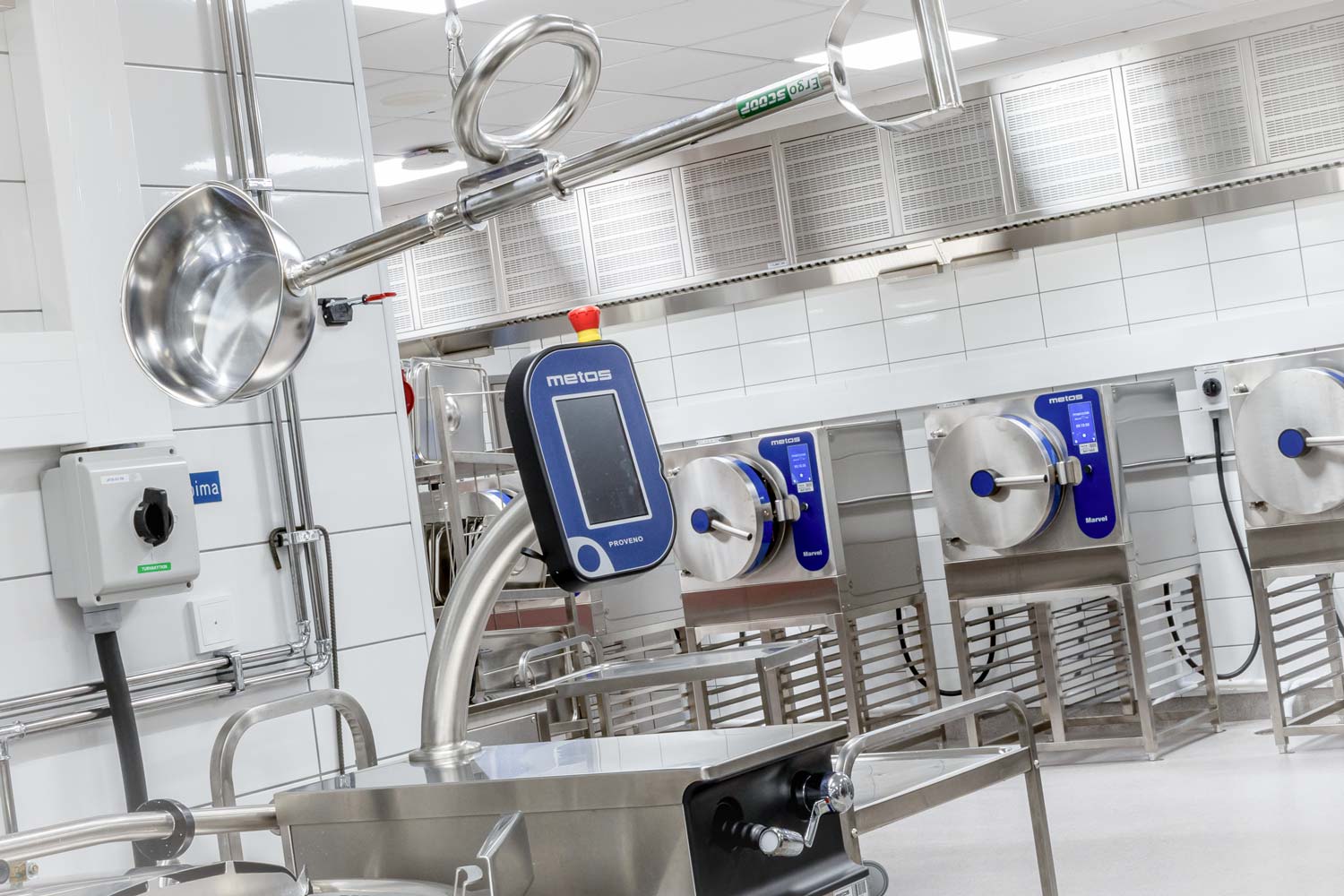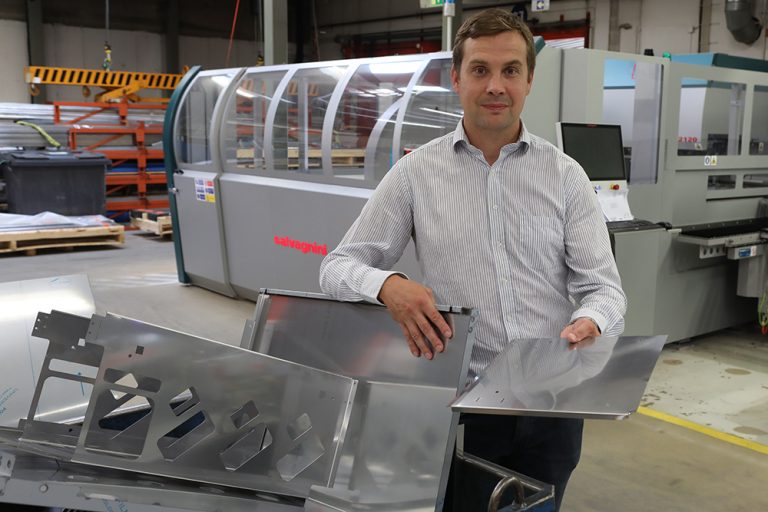A coldly efficient central kitchen in Porvoo
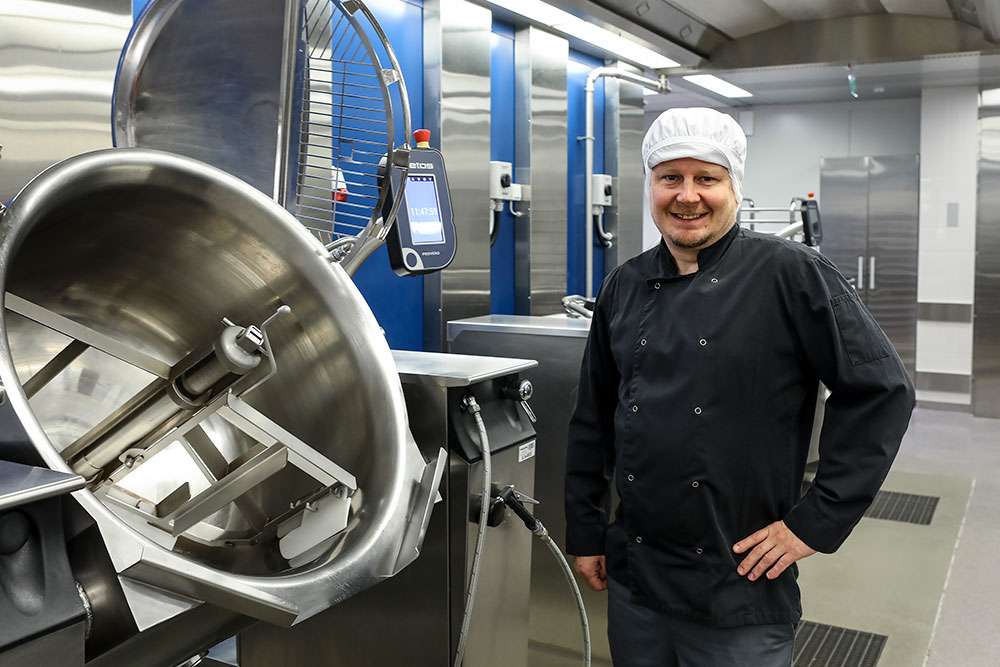
Porvoo's central kitchen prepares food for schools and kindergartens in the Porvoo area, the furthest being 15 km away. There are 50 places in total, of which 30 are kindergartens and 20 schools. Almost all the food, or about 95% of the production, is prepared cold, with a few meals prepared using the cook-chill method. The total daily production is around 10 000 portions.
Raw materials arrive at the central kitchen on Thursday, and on Friday the ingredients are portioned and weighed. On Monday, the food is prepared and transferred to a large cold store. On Tuesday the food is transported to the sites and on Wednesday it is heated for the diners. This process takes all the hassle out of preparation. There is no extra storage.
The food is only in transit through the central kitchen, only its form is changed from a raw material to a meal that is ready to eat and only needs to be heated. In practice, preparation is not so time-constrained. There are no mistakes, no extra transport and no unnecessary adjustments. The food is always fresh because it has not been cooked before," says Johannes Lohi, Production Manager at Porvoo Central Kitchen.
In the cold portioning kitchen, the food is brought in on dolly wagons and portioned into portion packs. The kitchen is equipped with two Metos Proveno kettles, a Metos Dos 2 dosing pump, a dolly lift, a dosing and packaging line. The sauce is prepared in turn during the packaging process in both kettles. Dispensing continues uninterrupted as the pump hose is changed to a full pot when the second 200 litre kettle is emptied and a new batch is started in the emptied kettle.
Ergonomics is key
Ergonomics plays a key role in the refrigeration process, both in the central kitchen and in the heating kitchens. In central kitchens, the refrigeration of food is mainly done on kettles. To avoid scooping, the kitchen kettles have higher than normal feet so that they can be emptied by tipping them directly onto the trolley or by using a pump to empty them. Any unnecessary lifting is avoided. All dams are cooled by circulating ice water to keep the food cold during mixing. We use diagonal mixing, i.e. mixing is done in a tilted position. This allows the components to be mixed very quickly and prevents the food from changing its structure.
From the dolly wagon, the food is dispensed into transport packaging on the cold room packaging line. The packaging line also uses a pump to dispense any sauce that may be added to the food. The sauce is prepared in turn in two kettles in the cold store during the packaging process. When one of the 200-litre kettles is empty, the pump hose is replaced by a full kettle and the empty kettle is used to start the preparation of a new batch.
For the larger sites, the food is lifted directly from the packing belt into the oven cars, where it is also heated in the heating kitchens.
Similarly, desserts, such as curd, are prepared in the kitchen side kettles, which remain in the kettles after preparation for cold storage. At the appropriate interval, the pump is moved from the packing room to the kitchen side and the curd is pumped into transport packaging.
For larger items, the food is lifted directly from the packing belt into the ovens, where the food is also heated in the heating kitchens. This avoids unnecessary heavy lifting.
We don't need the ovens much for preparation, maybe just for pre-cooking a component, or equivalently, if an oven in a kindergarten or school is broken, we can cook the food here. We also cook food for camp schools here. During the pandemic, we also cooked, cooled and packed thousands of individual ration packs every day for direct delivery to students," says Lohi.
Cold cooking was the method of choice
- I was eating at day-care centres and schools, and I started thinking about how to prepare the food so that the end result would be as good as possible for the diner. In the process, I also considered efficiency and reliability of the operation, as well as energy saving. But above all, the quality of the food on the plate is the most important criterion.
- I also toured several refrigerated kitchens and picked out the best practices to help me. I am an engineer by training and have also studied grain technology at the University of Helsinki's Viikki department. So my perspective and thinking in the field is a bit different. I applied the knowledge I gained from natural starches at Viikki to the cold preparation of our kitchen. In particular, it is important to use the right starch for each ingredient to achieve a homogeneous food mass. This prevents heavy ingredients from sinking to the bottom while the liquid remains on the surface. The right result is almost always the result of long recipe testing.
To avoid scooping, the kitchen pots have higher than normal feet so that they can be emptied by tipping them directly into the dolly or a pump can be used for emptying. Any unnecessary lifting is avoided. All dams are cooled by circulating ice water to keep the food cold during mixing. They use diagonal mixing, i.e. mixing is carried out in a tilted position. This allows the components to mix very quickly and prevents the food from changing its texture.
- We have a 6-week rotating menu with over 300 recipes tested with special diets. Recipe development is continuous and our aim is to have almost no additives and to make the food as home-cooked as possible. We try to avoid sauce bases and ready-made stock powders altogether. We bring the flavour of the food from the raw ingredients and the right spices from nature.
Lohi stresses that when there are a lot of places, it is important that the process is as simple as possible, right up to the heating. If the instructions are too complicated, as the number of ingredients grows and changes, there are dozens of opportunities to get things wrong.
- We've also invested in ergonomics so that there are very few lifting operations, which has helped us to keep sickness absence to a minimum. We have 11 people working in the central kitchen and they rotate through the different workstations every week. It pays to invest heavily in ergonomics. Good ergonomics has a direct impact on a good working atmosphere and low absenteeism," says Lohi.
Finally, on the packaging line, the product information is attached to the heating package. The heat packs are lifted from the packing line onto the oven wagons and the wagons are transferred to the cold store to await transport to the kitchens the following day. Ergonomics has been thought through to the last detail. Good design has been used to avoid any unnecessary lifting. In addition, clear instructions reduce the number of human errors.
